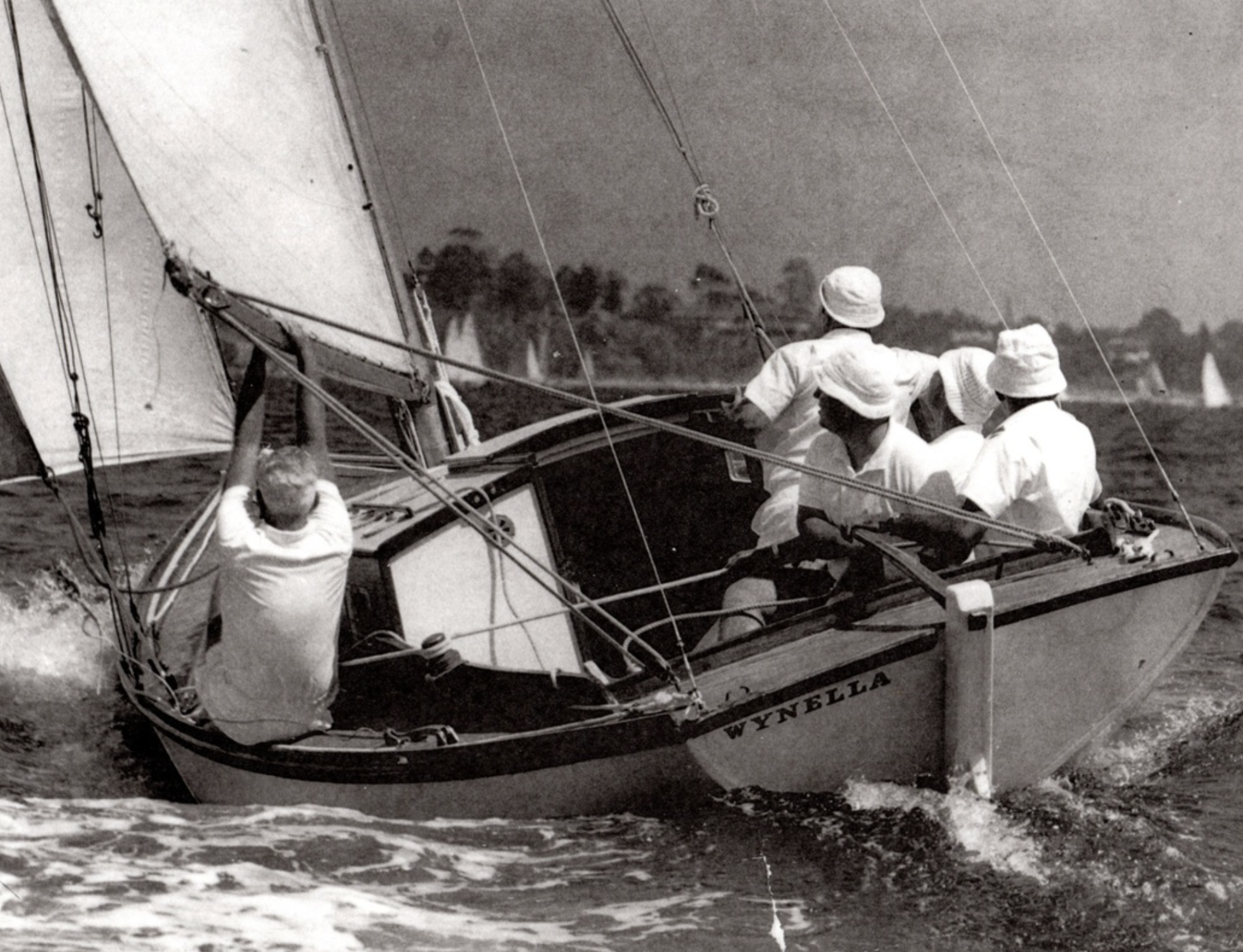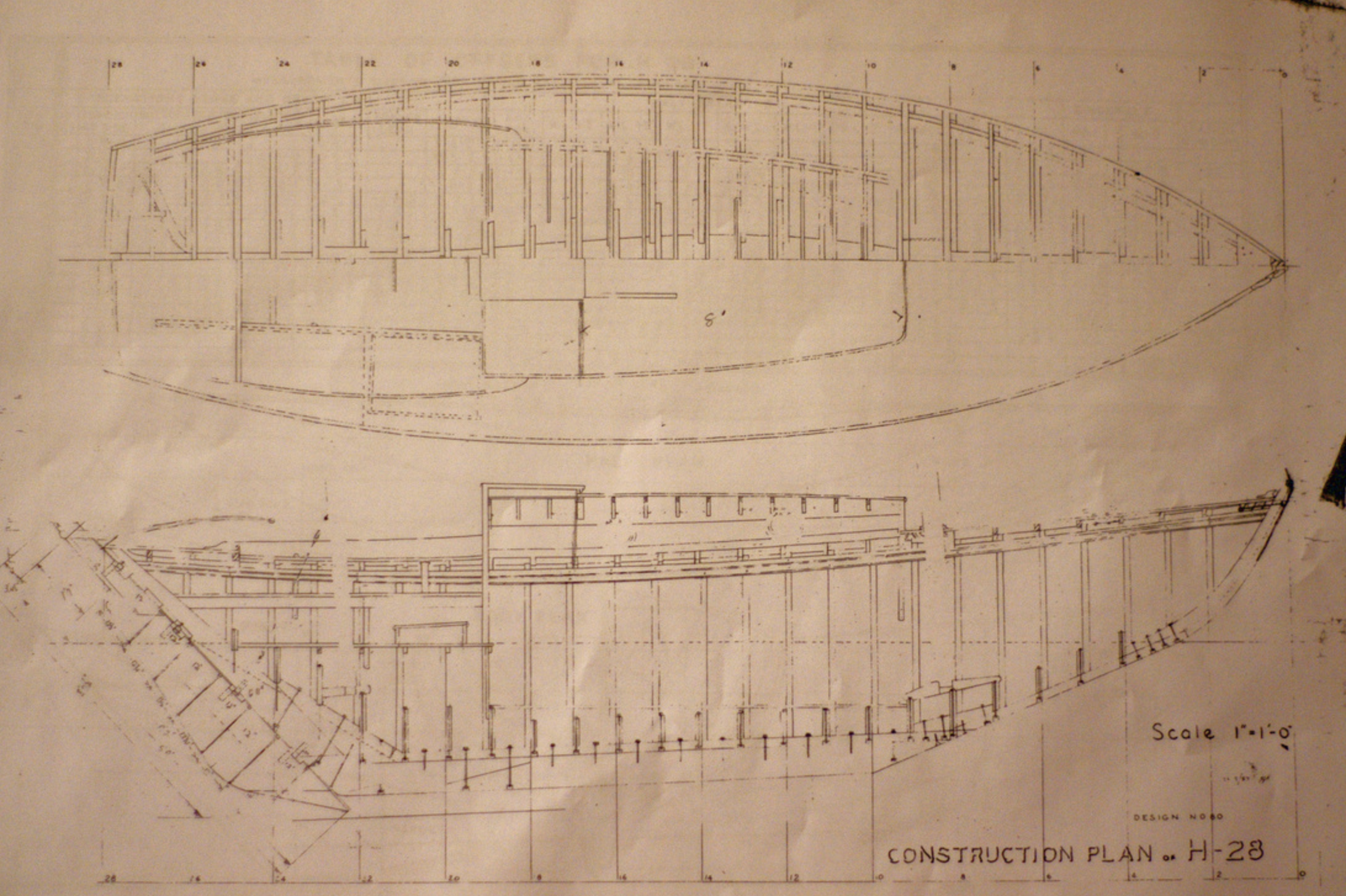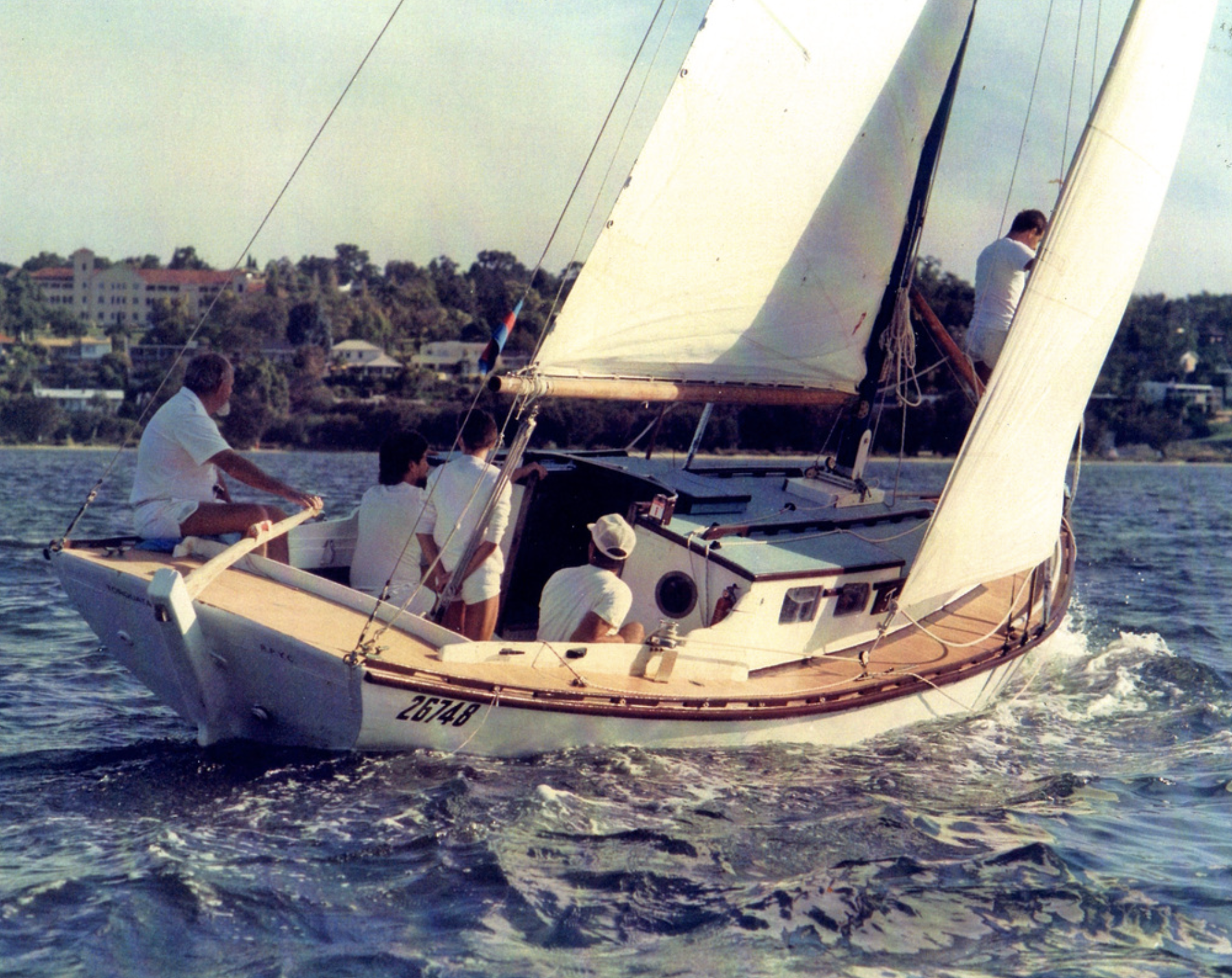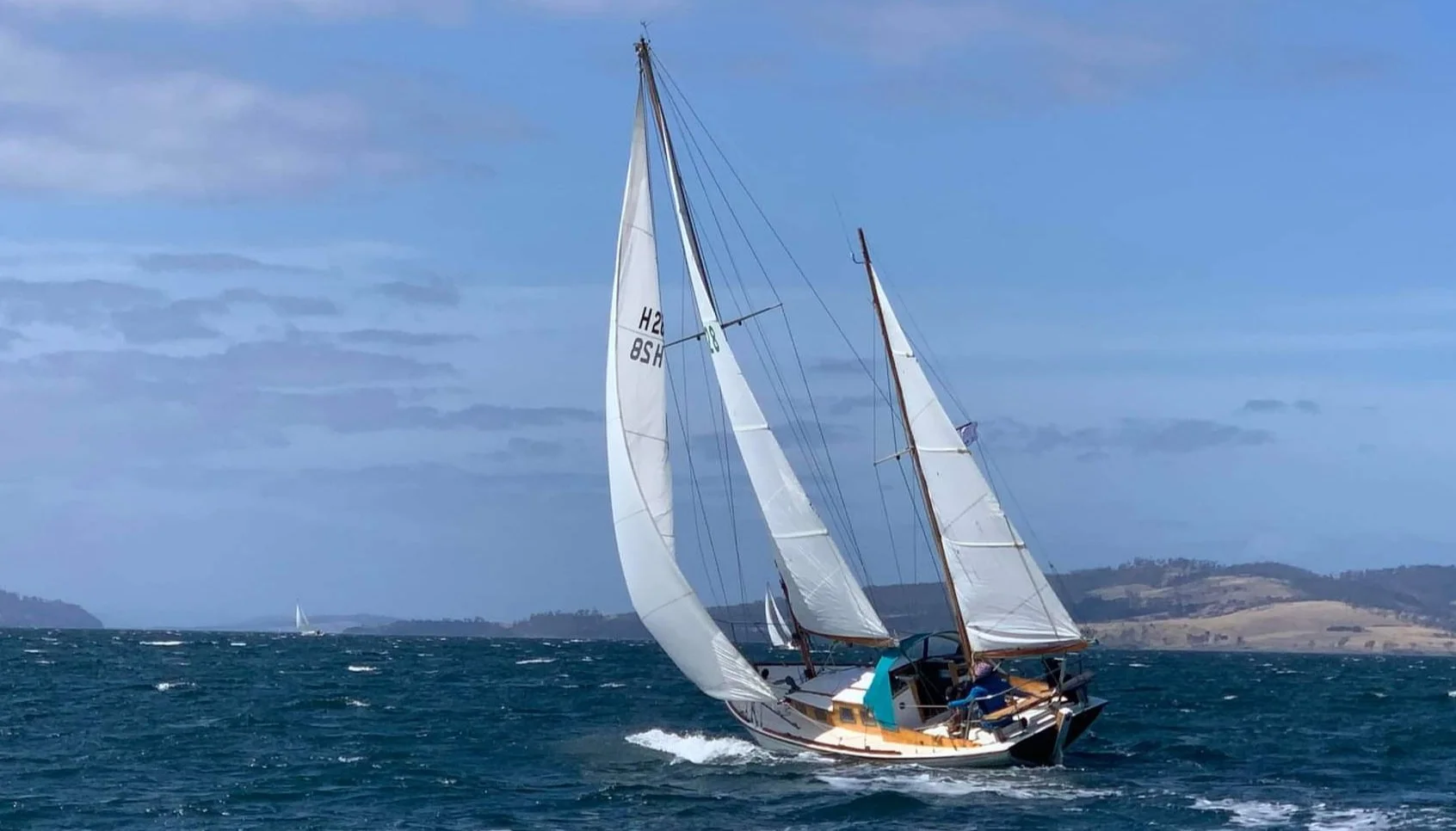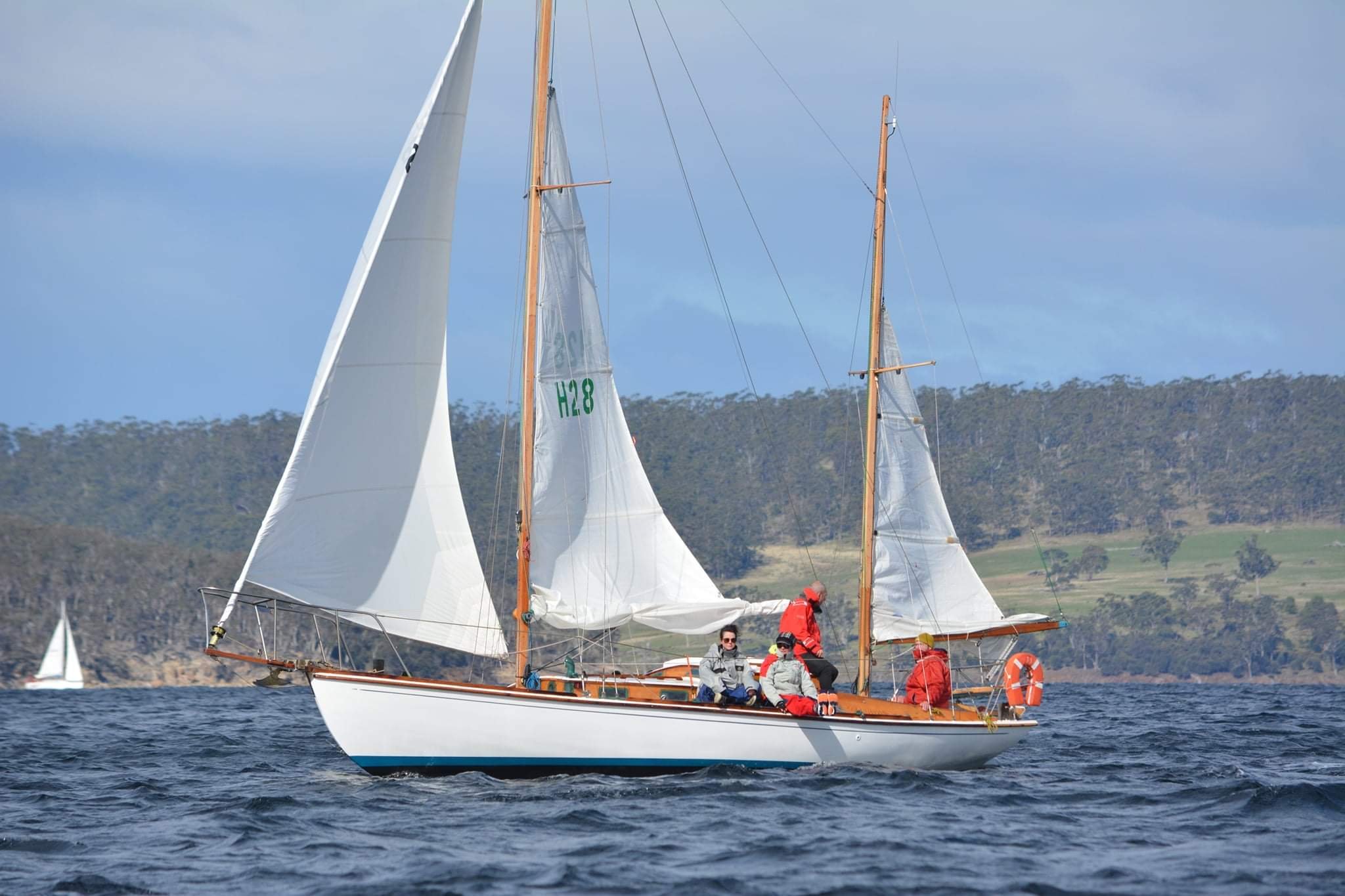“not spoiled by the influence of any rating rule”
Words and Photographs by Chris Crerar
“H-28 was not designed for racing, so she is not spoiled by the influence of any rating rule. She is also not one of those seagoing can buoys, or half-tide rocks that you pass when you go for a sail and meet again in the same place on your return. This design should not be contemplated or criticized by those who want all inside ballast, sawn frames, deadeyes, bowsprits to dangle an anchor from etc. This type of sea lawyer should get those things for himself, load them onto some abandoned fishing boat, moor himself securely at the head of some harbour out of the way and let those who want to, sail in their own chosen way.
All designs are a compromise on the designer’s attempt to combine certain desirable features without sacrificing too much safety, comfort and cost. H-28 was designed for the man who only has a limited time to sail, but would like to go somewhere and back in that time. It was designed to be a boat that could be quickly gotten underway for a sail on a summer evening, a boat that could ghost along in light breezes as well as stand up to anything she might get caught out in along our Atlantic coast in the summer time. She is wider on deck than an ideal sea boat should be (particularly aft), but that is to secure maximum deck space and to make her drier in a chop. A lively sea boat is no disadvantage on short trips such as H-28 would take”.
L. Francis Herreshoff, Rudder magazine, 1943.
Throughout 1943, L. Francis Herreshoff filled the pages of America’s Rudder magazine with observations on life, strong opinions, stern warnings and even quoted poetry, as he detailed, issue by issue, ‘How to Build H-28’, to a war weary American public.
As the 5th son of the legendary yacht designer Nathaniel Herreshoff, L. Francis was raised in a rarefied world of America’s Cup thoroughbreds and yachts for America’s wealthy. Living in the shadow of his famous father undoubtedly led L. Francis to forge his own path as a designer of boats, and the H-28 is his most celebrated and enduring example of his determination to create his own legacy and share his love of the sailing life.
L. Francis’ often rambling and unconventional Rudder articles don’t only provide instructions for building an H-28 but offer up the design as a window into a philosophy of living. The H-28 design was his gift to ordinary Americans, but alongside the technical instructions and drawings, were paragraphs and paragraphs of strong opinions and prescription for how the boat should be used and even who by.
L. Francis Herreshoff’s design philosophy for the H-28
"Most of the owners of H-28's will have to report to the office without fail on a Monday morning, so had best have a motor".
"Maximum room for the cost without sacrificing looks and speed."
"A shape that should stay entirely tight even if exposed to considerable strain or twisting."
"A draft that is deep enough to allow good windward performance in heavy weather but shallow enough to avoid the need to row miles to shore when anchored in a picturesque bay."“If you love and cherish her you can learn to draw sweet melodies from her and she will carry you through all the scale (Beaufort scale) of gales and calms, for she is based on well proven principles. She will lay well into the wind, under the mizzen, or steer well in a following sea and ghost along in light weather.”
For many young men returning home from the conflicts of WW11, L. Francis’ design and philosophy appealed to their desire to live the good life, as the H-28 was taken up and built both professionally and in backyards in great numbers in the late 40s and throughout the 1950s.
And not just in the USA. Australians and New Zealanders began building H-28s in earnest soon after the war, embracing the little ketch that quickly became known for its “sea-kindly” manner and all-round practicality - perfect for families, racing around the buoys, or a weekend away.
L. Francis Herreshoff passed away 50 years ago this December. By 1972 his H-28 design, had been built in huge numbers and, despite his initial warnings, had been modified in many ways and was also frequently built as a sloop. It was also extensively built as a production fibreglass boat in Australia by Walker and Compass in New Zealand. A material L. Francis dismissively called “frozen snot” - his purist sensibilities would have been horrified.
But would he have been surprised at the enduring popularity of the H-28? His writings suggest a solid self-belief in what made a good sailing vessel, so probably not.
79 years after the design was first released in the Rudder, a quick search on any boat sales website will still bring up several examples, and that the H-28 still has strong followings in Auckland, Melbourne and Perth, is testament to L. Francis’ design and the continuing affection many have for the boat.
Ask many yachties about the H-28 and they’ll wistfully tell you they had one as their first boat, and that, despite now sailing on faster, more advanced designs, they still have a soft spot for the H-28.
But why is it that a design that is also the butt of many jokes - such as ‘an H-28 will always get you to your destination, but you may just starve on the way’ - remains so well loved?
Part of the answer lies in the first part of the joke, and also, I think, that the H-28 has soul (especially the wooden ones!). They really are the little battler that will get you there, no matter what the conditions.
My first boat, which I still have, is a 1930s Gunter rigged Tamar River couta boat. Built of King Billy and Huon pine, ALICIA is a thing of beauty. The Ferrari of fishing boats, I call her. But she’s a handful to sail, and very quickly a sailing trip can go from pleasant to downright scary.
I’d also had similar experiences on a Young 88 I crewed on for many years.
In late 2018, I putted on ALICIA past a boat I’d long admired in Little Oyster Cove in Kettering. MINERVA had a for-sale sign attached to the pulpit.
My partner at the time encouraged me to make my dream reality, so I called the brokers. I was gone the moment I jumped on-board.
Knowing nothing about the design, I was taken by her classic lines, timberwork and traditional interior. MINERVA “sailed” through a marine survey and, before any doubt within me could arise, I’d become the owner of a 1957 kauri pine ketch rigged H-28. Built by Montgomery’s Boatyard in Brighton, Victoria, MINERVA was associated with the Sandringham Yacht Club, before coming to Tasmania in the 1980s.
MINERVA has had several custodians since, and has spent most of her Tassie years at home in the Channel, namely Kettering and Barnes Bay. Trophy plates adorn the interior, mostly bearing the name of R. Aldridge. Roger was a colourful character who raced MINERVA very competitively at the Kettering Yacht Club, working on the principal that he only need to complete every race to win a series! The current MINERVA crew added a trio of trophies in 20-21 when we took out the KYC Division 3 season.
I’ve now been the latest custodian of MINERVA for just over three years and can wholly attest to the sea going behaviours attributed to the H-28 design. While I’ve always thought the phrase ‘sea-kindly’ was slightly naff, it truly is the perfect descriptor of their manner on the water.
She’ll move in a light breeze. Just! Her full keel acts as something of a brake in less than five knots.
She loves reaching but will only point so high.
When things get hectic though, MINERVA comes into her own. She always feels safe and predictable. It always feels like MINERVA has your back!
We’ve never felt in danger on MINERVA, even during a dismasting of the main mast last September. When the mast broke above the spreaders midway through the combined clubs Pipe Opener race during a 30 knot plus westerly gale, we were all in shock and instantly felt very wet and cold, but we never felt at risk. She took us back to port safely.
But it’s MINERVA’s balance and movement through the water that really are a joy to experience. We joke that in certain conditions, with the mizzen and jib up only, she is so balanced that you could pop below to make a cup of tea while sailing solo.
Without fail, every twilight race, Scott, who’s one of MINERVA’s crew members, comments on the way her hull moves through the water. Part of that pleasant motion is that MINERVA is a timber boat, of course, but it’s also because of Herreshoff’s skill as a designer.
It’s been outside the Derwent heads, or off the south coast of Bruny Island in some real swell, however, that I’ve gained an appreciation of why this little boat is up there among the designs that have done the most circumnavigations and big ocean crossing journeys.
She is predictable and benign but, equally, not boring or dull. You may starve, as they say, but you will get to your destination. That kind of peace of mind is priceless!
What many may find surprising is that for the past three years MINERVA has also been my home! A traditional H-28, such as MINERVA, has little of the space or amenities of a modern yacht – even those equivalent in length – but her cabin is cosy and full of character. Berthed in a marina has certainly made living on-board Minerva feasible, as did converting the saloon into the equivalent of a queen bed by temporarily installing timber panels to cross the companionway and act as a bed base.
My new (land-based) home in Woodbridge was meant to have been built by now, but the craziness of the pandemic saw the build postponed until this year. Knowing that I’d be living on-board for at least another year, the desire for a little more space and temptation got the better of me.
For better or worse, I fell for and purchased a 1962 Cheoy Lee built Robb 35 called MARCO POLO in Sydney last May. Sydney’s extended Delta lock-down and an unexpected sinking have meant that MP has not yet made the trip to Tassie. She is now moored off Mackenzie Marine in Pittwater waiting for a new engine to be installed and a few other things to be done before a planned departure south sometime in March.
Not wanting to become a tragic fleet owner, I’ve put Minerva on the market. I feel an occasional sense of betrayal and the crew all have mixed feelings about their boat being sold on. I too get a little emotional when I think about all the great times we’ve had on Minerva, That Minerva has always had our back and the uncertainty of how the new boat will behave makes me second guess my decision occasionally.
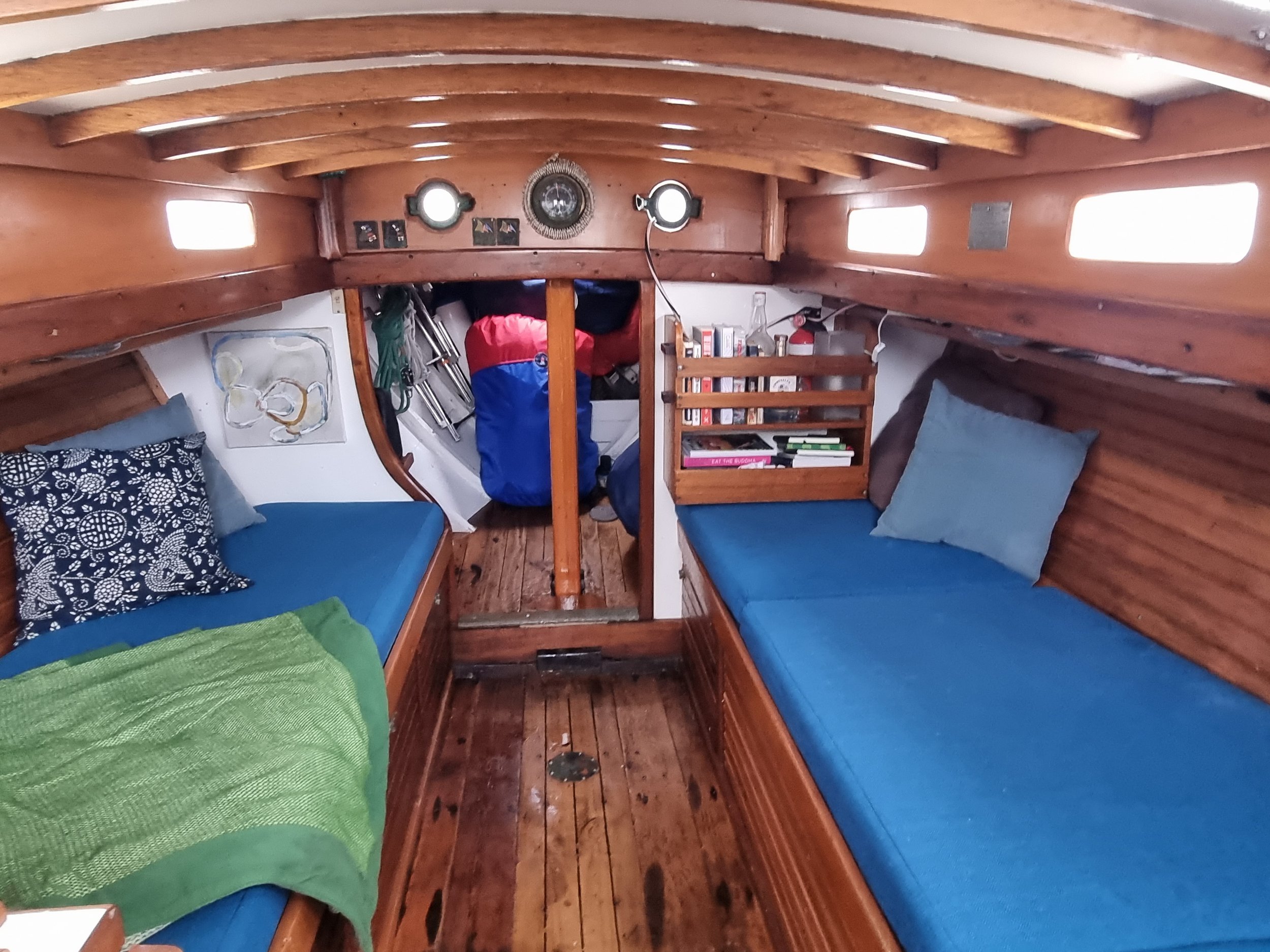

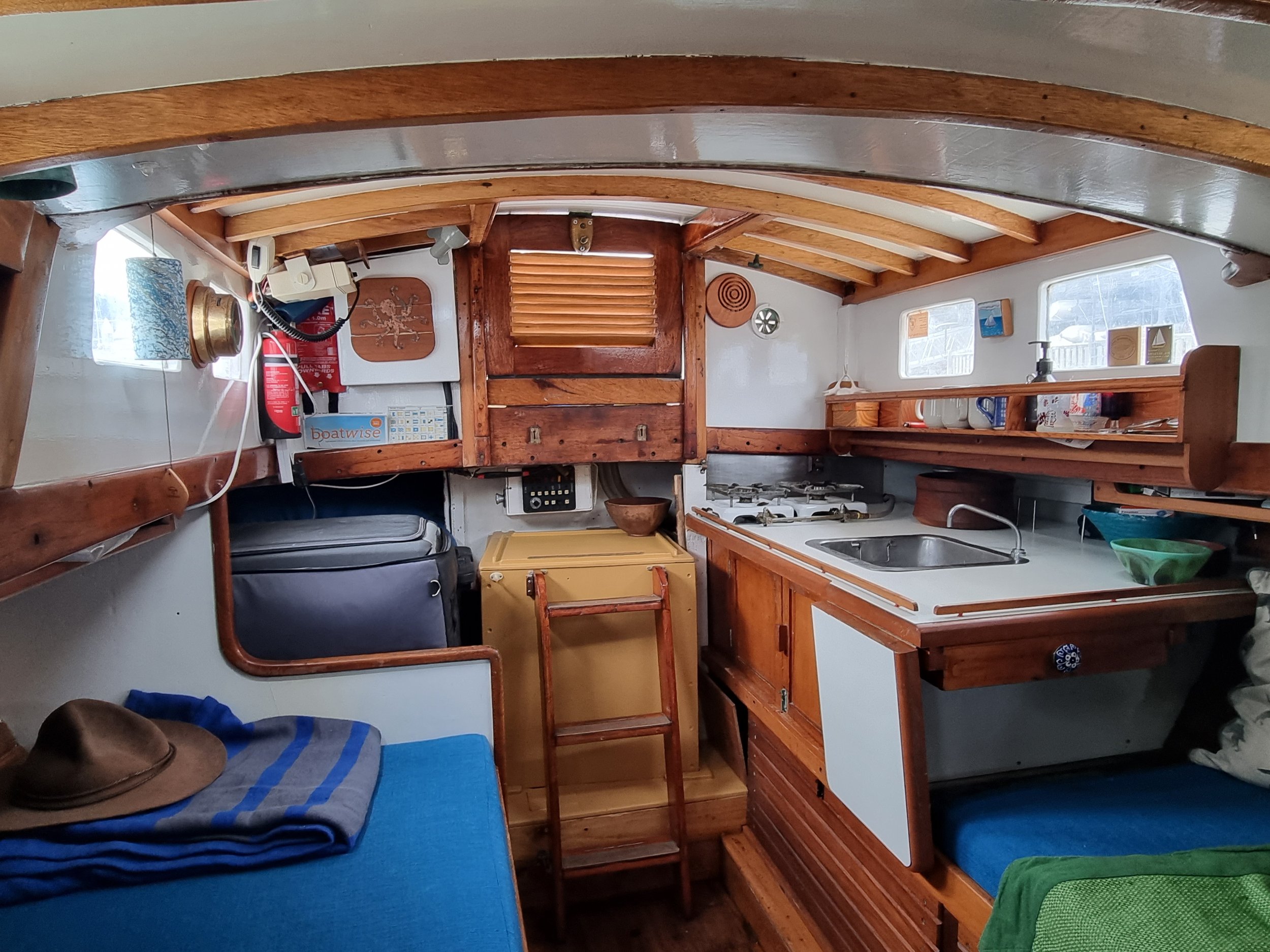
![20220114_130713[1].jpg](https://images.squarespace-cdn.com/content/v1/5f83c5947bb62b2036f18924/1642753214771-XR2NK1MVBVILOHIUC1JR/20220114_130713%5B1%5D.jpg)
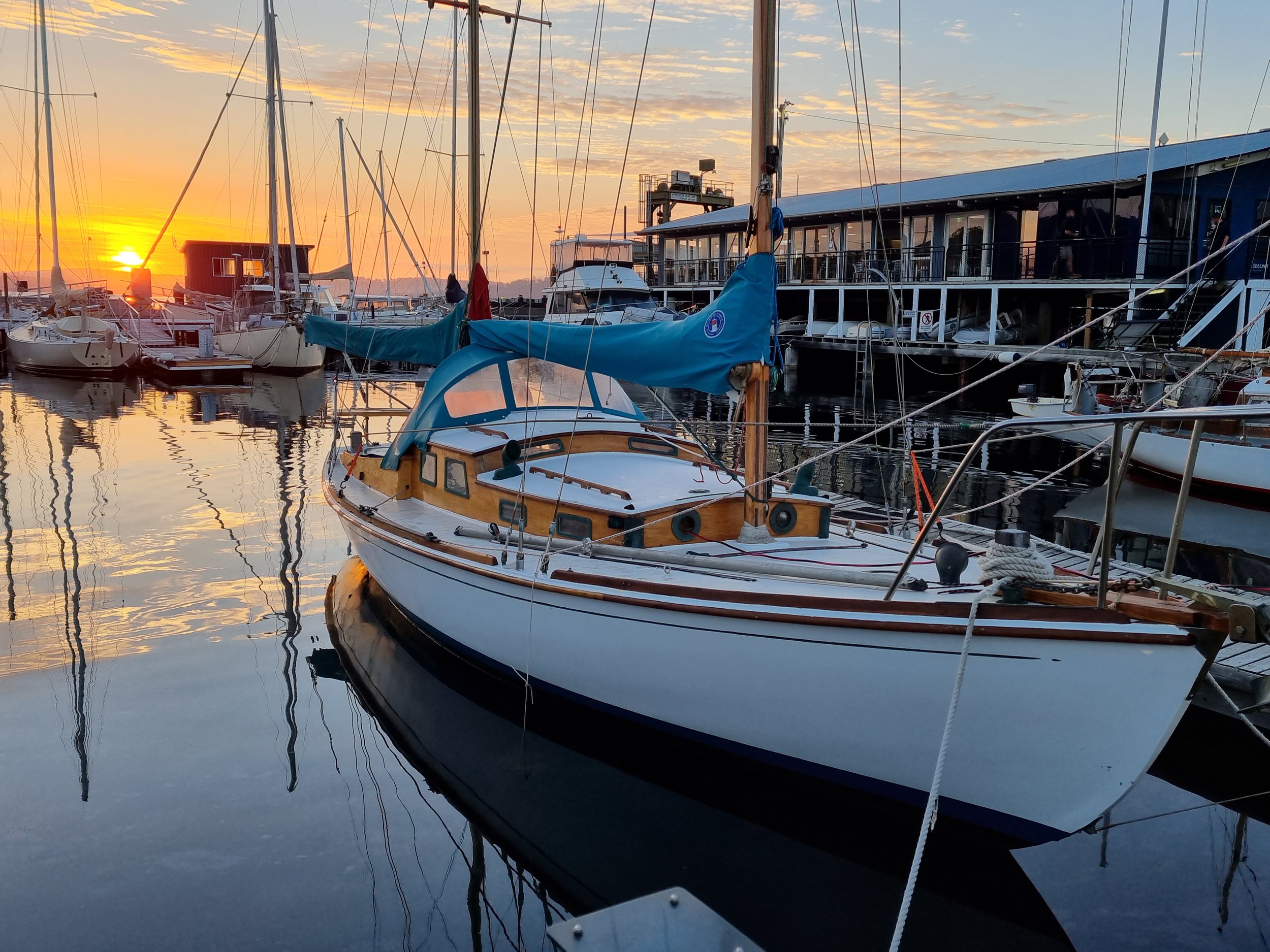
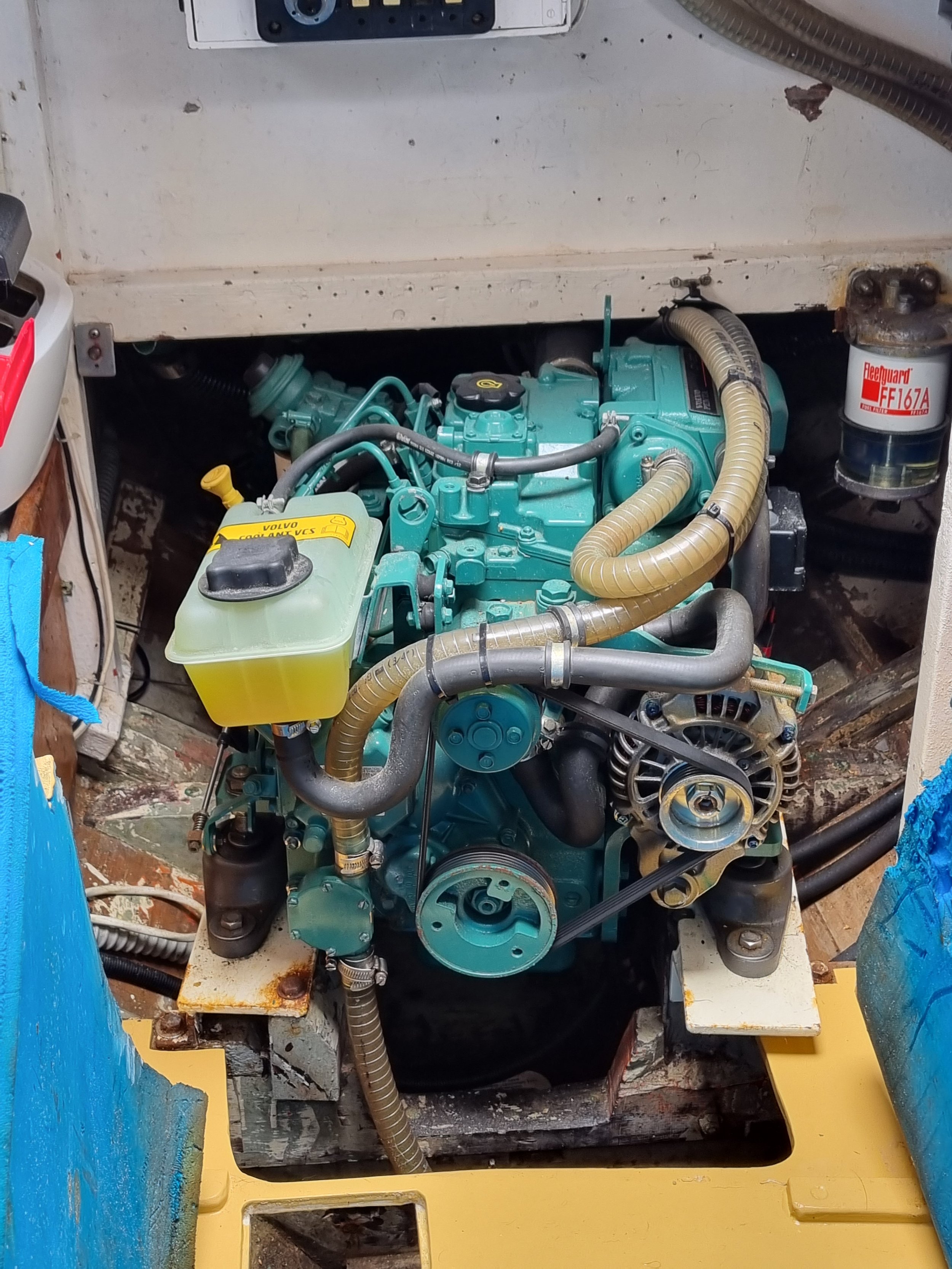
The course has been set however, and MINERVA must find a new custodian. Maybe somewhere in the future, someone will mention the H-28 to me, and I’ll become all wistful and glassy eyed, just like the yachties I’ve spoken to?
“The cabin of a small yacht is truly a wonderful thing; not only will it shelter you from a tempest, but from the other troubles in life, it is a safe retreat”.
L. Francis Herreshoff.

